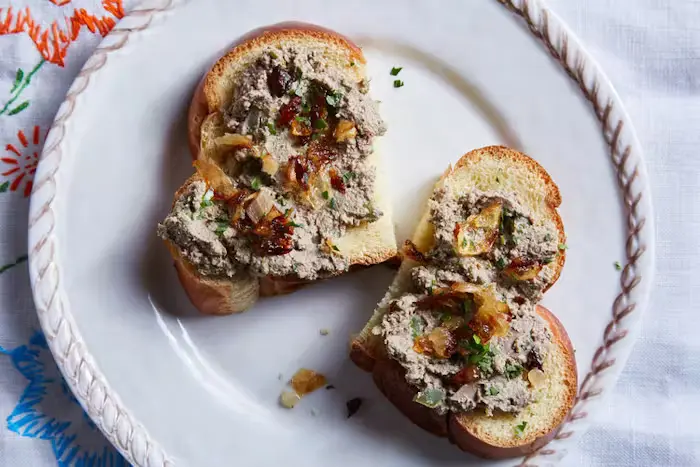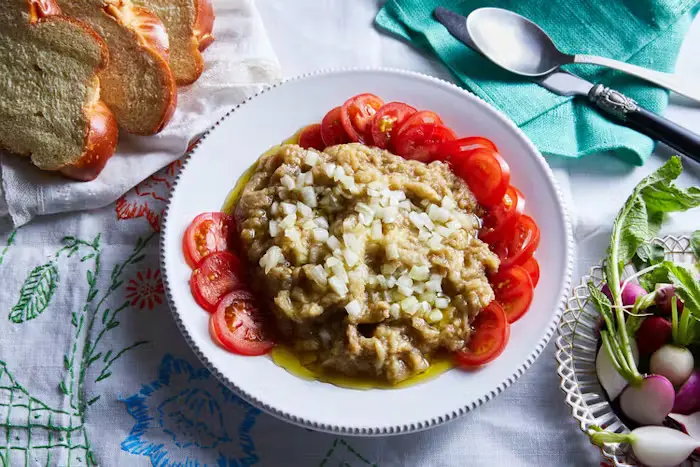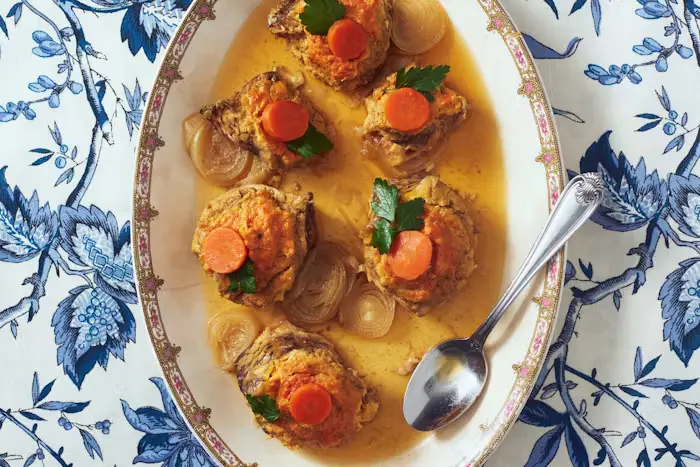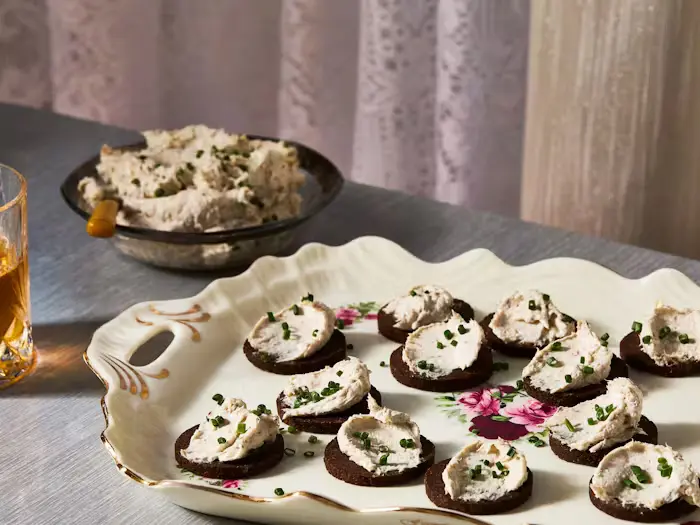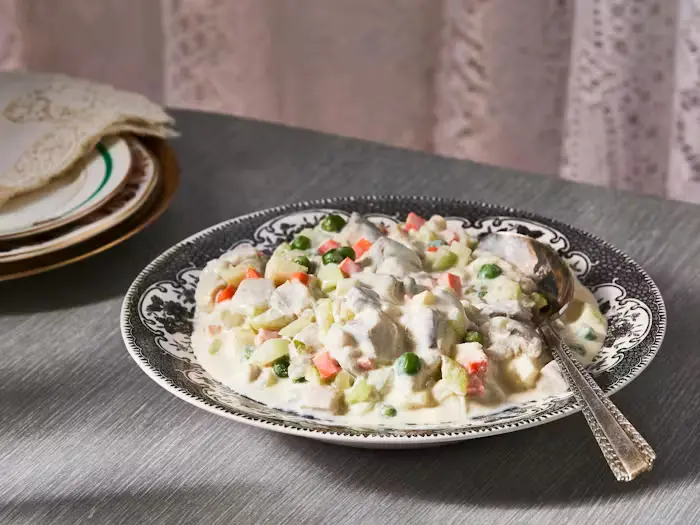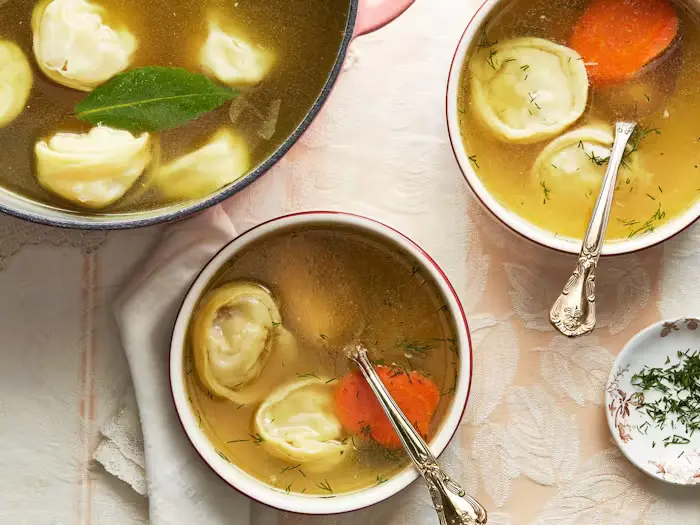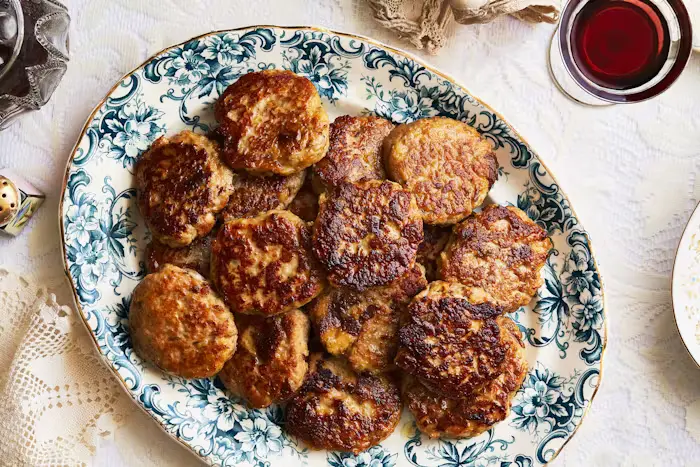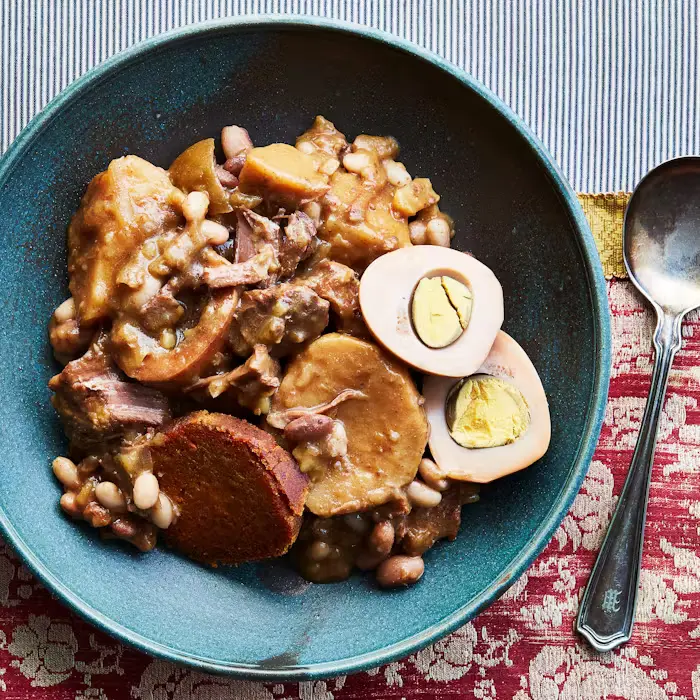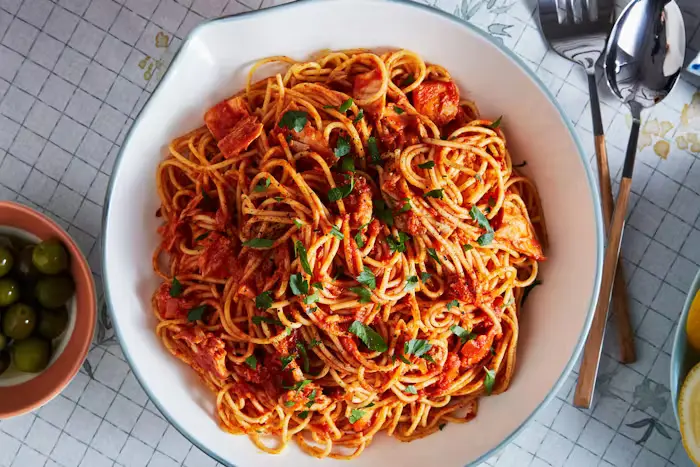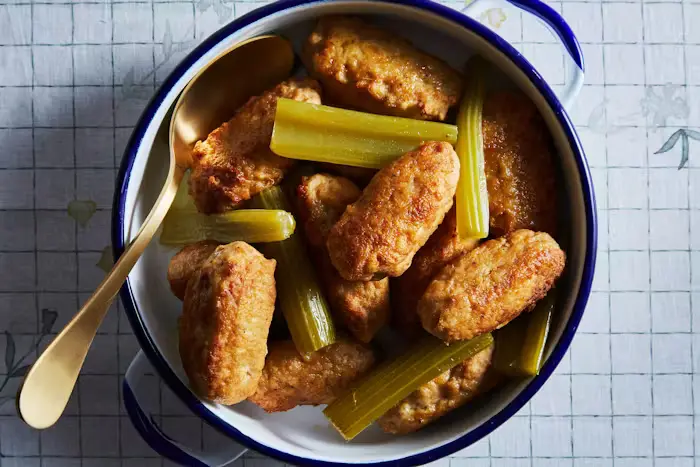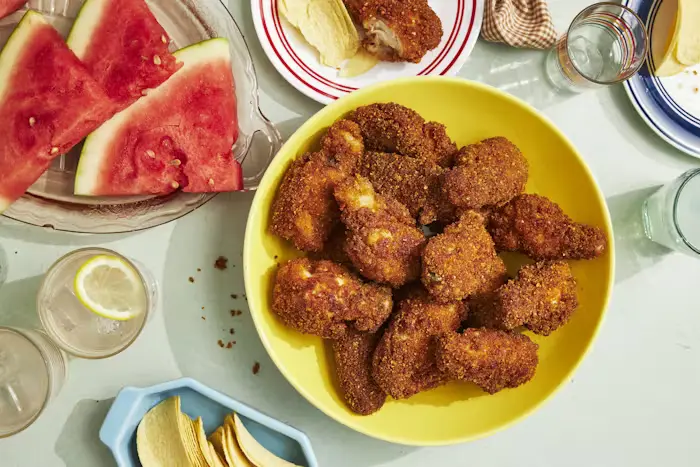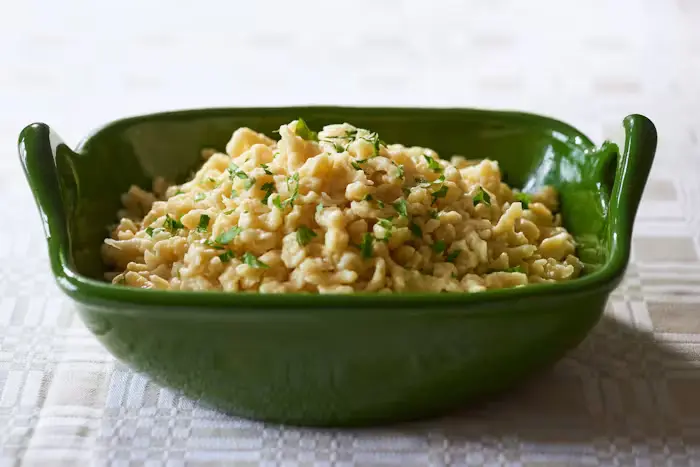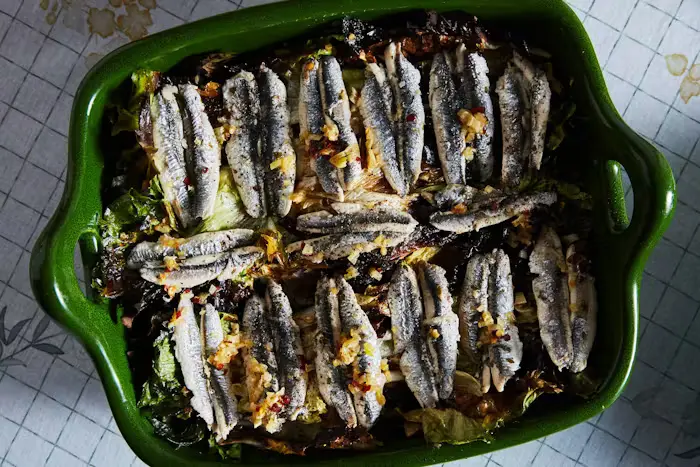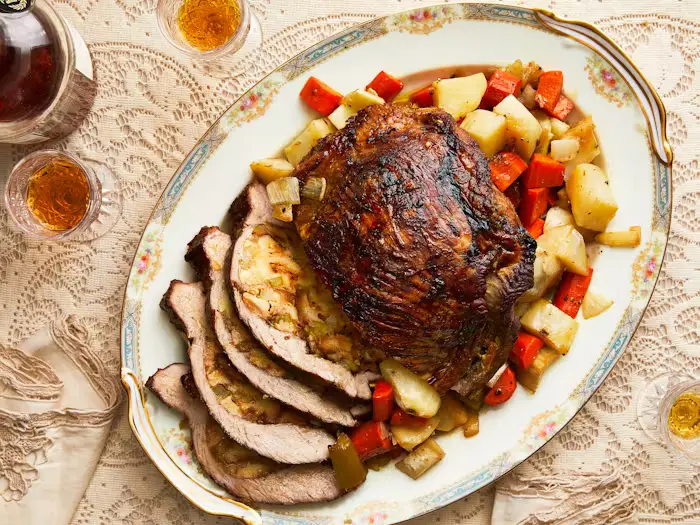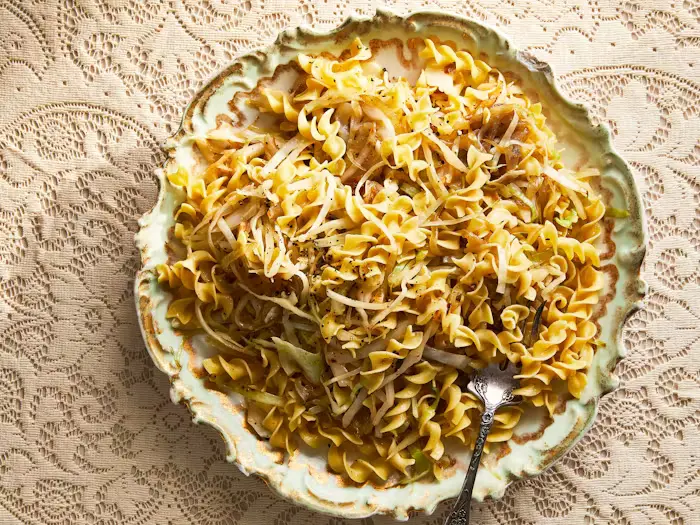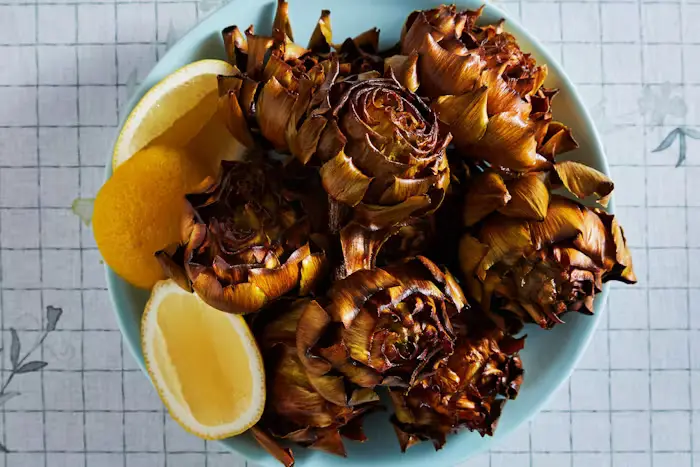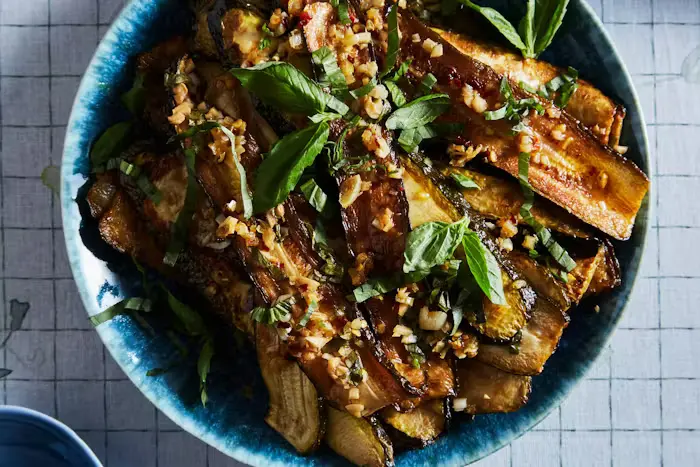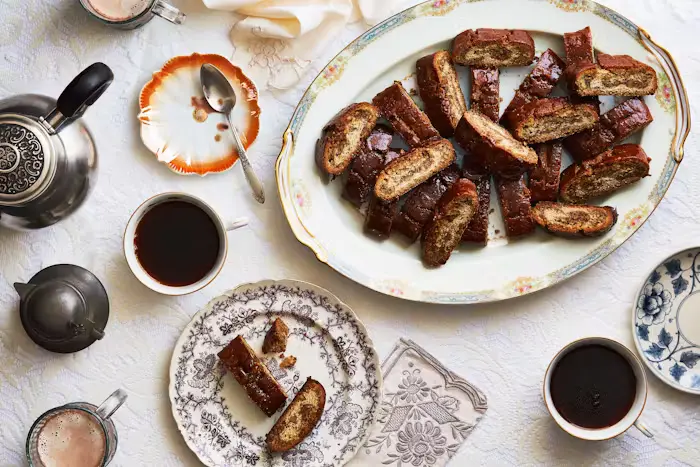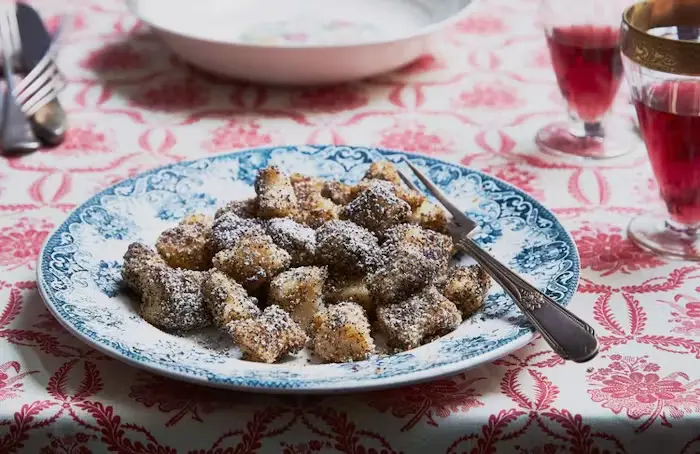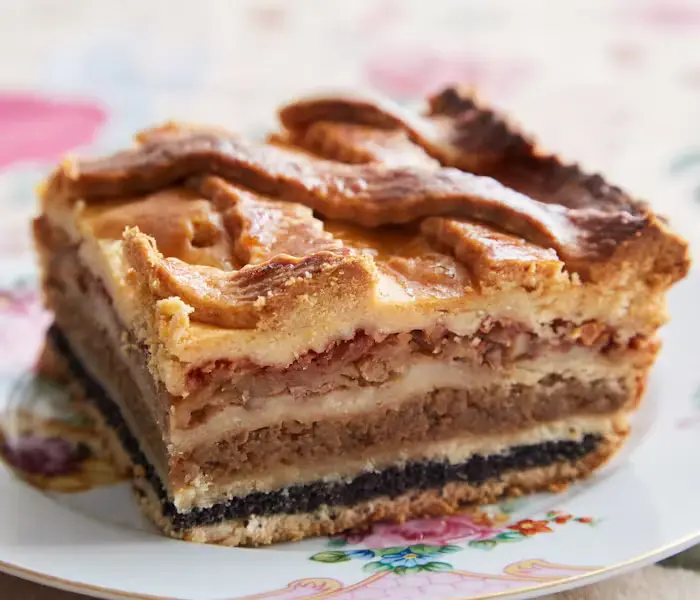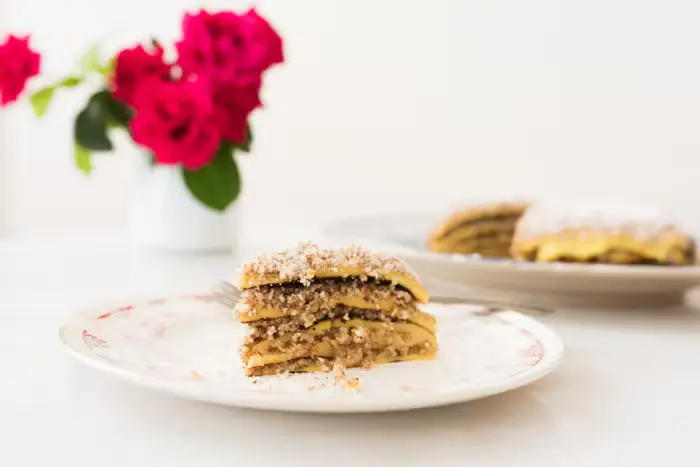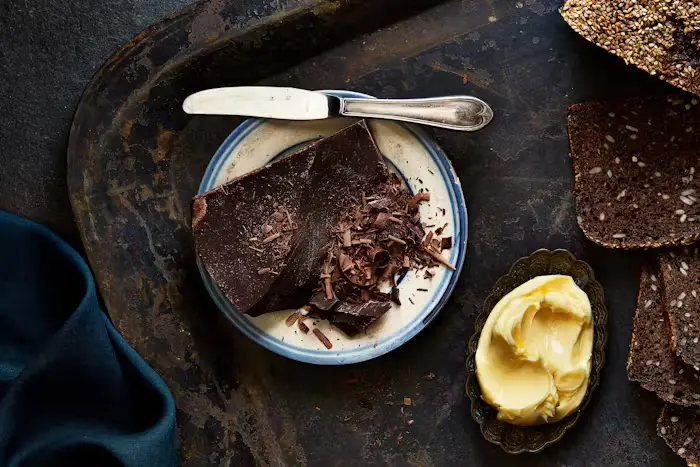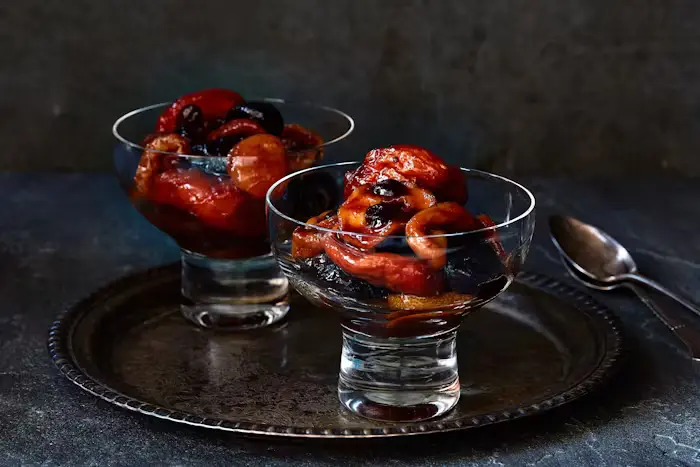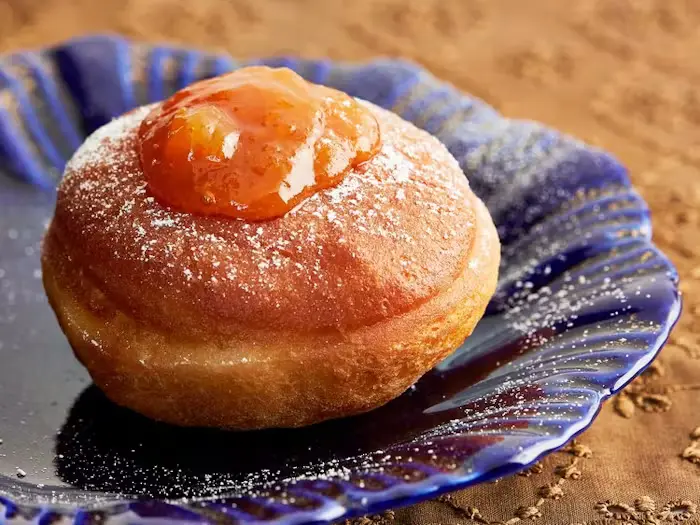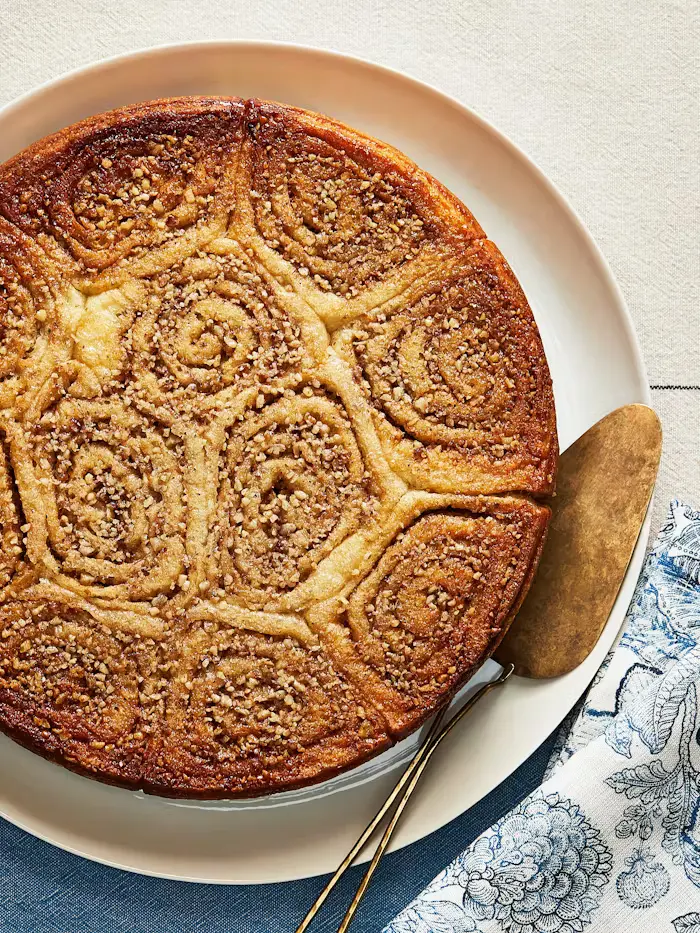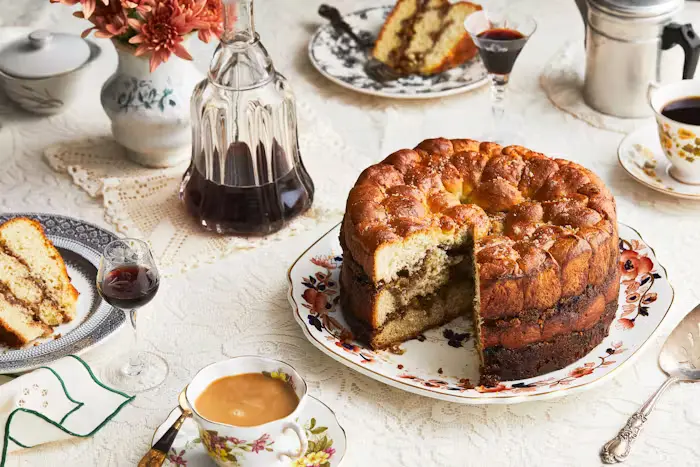Recipes From the Kitchens of Holocaust Survivors
33 Recipes

Recipes From the Kitchens of Holocaust Survivors
33 Recipes
The Jewish kitchen is one of perseverance. Nowhere is that felt more deeply than in the recipes of those who survived the Holocaust.
Since our inception in 2017, the Jewish Food Society has connected with many survivors and their loved ones. They have shared powerful stories with us like one from Eva Moreimi about her mother Ilona Kellner, who collected 600 recipes from fellow prisoners during the war and hid them from SS officers. Cammy Bourcier shared a chopped liver recipe from her father Herman, who was part of an effort that saved 100,000 Jews during the war, and Alex Sternberg recounted memories of his mother Olga, who spent evenings in concentration camps reciting recipes with her fellow prisoners to help sustain one another’s spirits.
We have also added several recipes and stories to our archive from the poignant and powerful cookbook “Honey Cake & Latkes: Recipes from the Old World by the Auschwitz-Birkenau Survivors.”
In some families, the shadow of the war seemed to hang over every meal, and in others, survivors took every chance to celebrate like artist Vivian Reiss's parents. Saved by Raoul Wallenberg in Budapest, they came to the U.S. to build a new life where they frequently hosted elegant cocktail parties. “Even though they had been through the hardest times, they just had a joie de vivre," Vivian shares.
We hope you will read the stories of these survivors, make their recipes, and remember. For more Jewish recipes around the world, check out our complete collection.
If your family has a recipe from a survivor to share, please reach out to us at hi@jewishfoodsociety.org
In this collection
33 Recipes
